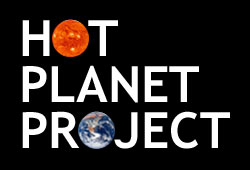There’s nothing more fundamental to practicing science, making policy or simply getting your bearings than measuring. This point was recently made in two very different ways: a story about the blind spots that result from failing to collect data, and research on a creative way to collect data that would otherwise be missed.
InsideClimate News reported that commercial infrared cameras that the oil and gas industry uses to monitor methane leaks from their equipment frequently don’t work in the extreme cold of Alaska’s North Slope. Warming is most pronounced in the Arctic, and tracking methane emissions is crucial for studying climate change there.
Meanwhile, researchers from Oregon State University have devised a clever method of predicting river flow in the Arctic. They’ve found that measuring the diversity and abundance of bacteria is 20 percent more accurate for predicting river flow than the current method of modeling precipitation and watershed area. Better indirect methods of tracking the region’s hydrology are particularly important given the difficulty of directly measuring river flow in the Arctic.

